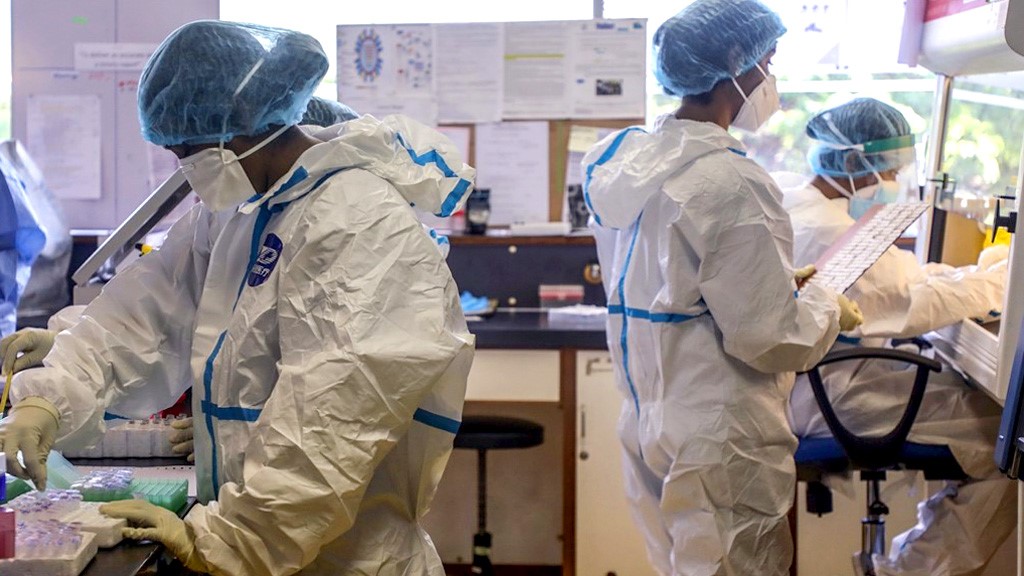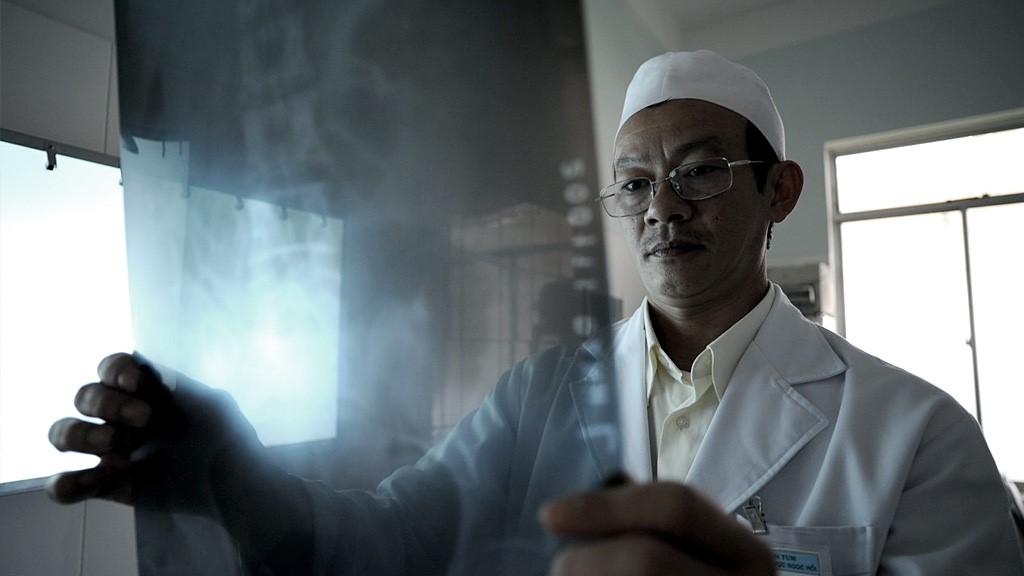How Countries in Asia and the Pacific are Working Toward Universal Health Coverage and Controlling COVID-19
The spread of the coronavirus disease (COVID-19) pandemic across Asia and the Pacific has exposed the gaps and deficiencies in the region’s health systems and the interdependence between health security and economic stability. That, in turn, has highlighted another reality: the importance of universal health coverage (UHC). Achieving UHC means that everybody can access the quality health services they need without suffering financial hardship. Countries that have made strong commitments to UHC have been able to better manage the health impacts of the pandemic—and therefore, the economic impacts as well.
ADB and WHO members in the Asia-Pacific region are making headway toward the goal of achieving UHC. With ADB's 53rd Annual Meeting preparing to host a live event on UHC, here are four examples of how countries in our region have made significant progress towards UHC and how their health systems have limited the impact of COVID-19.
Korea
Approximately 97% of Korea’s population is insured through the country’s universal single-payer healthcare system, which resulted from two milestones: the adoption of UHC in 1989 and then the merging of 370 insurance funds into to a single-payer system in 2000. Korea’s health system is mostly financed through the National Health Insurance (NHI) system and generally delivered by private health providers. All health providers are mandated to participate in the NHI and to treat patients under the same benefit packages and provider payments set by the NHI law. Total health spending is relatively high, at about 8.0% of GDP as of 2019, with 4.9% of GDP spending coming from government or compulsory sources. The country’s robust health infrastructure includes a high number of hospital beds per capita—12.3 beds per 1,000 people—along with 254 health care centers, more than 1,300 sub-health centers, over 1,900 primary health care posts, and 46 community health promotion centers across the country as of 2018. Significant investments in health data and technology have also been made in the country. These have been used to improve quality, efficiency, and effectiveness of service delivery.
Korea’s response to COVID-19 owes much to experience gained from the Severe Acute Respiratory Syndrome (SARS) outbreak in 2003, particularly the formation of an agency tasked with preparing for, and responding to, infectious disease outbreaks, the Korea Center for Disease Control and Prevention (KCDC). In the early days of COVID-19, Korea adopted a widespread testing strategy that included people who were asymptomatic. The roll-out of rapid diagnostic testing was a key pillar of the country’s response and relied largely on the country’s ability to quickly develop and manufacture tests. Shortly after the country’s first case was confirmed, KCDC officials met with more than 20 private sector partners to discuss mass production of COVID-19 testing kits. Within one week, on 4 February, the first company had been authorized to begin producing testing kits. In early February, testing was expanded with the help of a new, single-step, real-time reverse transcription-polymerase chain reaction (RT-PCR) test kit, which gave results in just six hours. By 20 February,12,000 people were tested in the country; by 8 March, over 180,000 people were tested. This enabled public health officials to track the spread of disease and effectively implement control measures.
Sri Lanka
Sri Lanka has made steady and substantial progress towards UHC since 1931, with the government ensuring adequate access to free public healthcare services. The health system covers everyone equally and healthcare is free at the point of delivery. It is publicly funded through general tax payments and is solely controlled by the public sector. The health system in Sri Lanka is pluralistic, encompassing both the public and private sectors. Although the public system provides good quality healthcare at no cost to patients from primary to tertiary levels, Sri Lankans still rely heavily on the private sector for outpatient care, which involves out-of-pocket payments.

Sri Lankan health workers wearing protective gears and carrying out tests for Covid-19 due to coronavirus pandemic in Colombo, Sri Lanka 01 June 2020.
Sri Lanka has prioritized its health spending on expanding and maintaining its infrastructure —a health facility is available within four kilometers of every household. This network of health facilities in both rural and urban areas allows services to be provided across the entire island. Sri Lanka also prioritizes the health of its aging population by creating a separate unit in the Ministry of Health that will collaborate with the Ministry of Social Services in the design and implementation of relevant policies. This will contribute to the welfare of the country’s elderly population, which is projected to reach 30% by 2050.
Sri Lanka's network of geographically accessible health facilities and a health system with no financial barriers enabled the country to efficiently respond to COVID-19. The health system allows everyone access to government facilities for free testing and treatment. In addition, the president set up a high-level task force to combat COVID-19 using an all-of-government and whole-of-society approach emphasizing testing, tracing, and treatment activities, in addition to strict lockdowns with travel restrictions.
Thailand
Thailand adopted a UHC policy in 2002. Its health insurance scheme, which covers close to 75% of the population, is funded through general taxes and managed by the National Health Security Office (NHSO), which allocates funding based on capitation, such as numbers of registered UHC-eligible members in service areas, for outpatient care and diagnosis-related group-based payments for inpatient care. Two decades after the introduction of its UHC policy, Thailand continues to monitor UHC population coverage, service coverage (both preventive and curative), and financial risk protection. According to the WHO Global Health Expenditure database, out-of-pocket expenditure has declined substantially—from 34% in 2001 to 14.8% in 2007 and 11.1% in 2017.
The country’s successful implementation of UHC, and its ability to achieve good health at a relative low cost, is largely due to comprehensive geographical coverage of primary health care (PHC)—with almost 9,800 health centers acting as gatekeepers for referral to secondary and tertiary care. Even before the implementation of UHC, and over the past four decades, Thailand had substantially invested in basic healthcare infrastructure and human resources for health. Since the 1970s, one of the unique contributors to the Thai health system has been the large corps of Village Health Volunteers (VHV), totalling more than one million. These VHV have helped support the prevention, detection, and reporting of COVID-19—minimising local transmissions, raising awareness in the community, and encouraging people to comply with disease control measures.
Thailand implemented a decisive, coordinated response to COVID-19, including the formation of the Center for COVID-19 Situation Administration, a national task force that provided daily briefings to the public, and implementing rolling curfews, lockdowns, and restrictions on international and domestic travel. In July, it had set up more than 200 COVID-19 laboratories to expand testing, while the country’s network of public and private hospitals has kept the fatality rate under 2%. On 21 August, the government announced Thailand had gone more than a month with no new cases.
Viet Nam
Viet Nam has invested heavily in its public health care system and health spending has outpaced the country’s recent booming economic growth. Since 2000, for every 1.0 percent increase in GDP per capita, public spending on health has increased by 1.7%. This has translated to an almost three-fold increase of spending in constant US dollars, from $46.2 spent on health per capita in 2000 to $129.6 in 2017. A social health insurance scheme was introduced in Viet Nam in 1992 and between 2000 and 2017, coverage in the scheme increased from 13% to 87% of Viet Nam’s population. Viet Nam’s tiered health system infrastructure also helps to ensure that local needs are met. Across the country, there are more than 13,000 public facilities, with an additional 35,000 health facilities in the private sector. Viet Nam’s health system is also performing well in terms of ensuring financial protection. The incidence of catastrophic health expenditure has reduced from 14.4% in 2006 to 9.4% in 2016 (at the 10% threshold). The country is also prioritizing preventive care: at least 30% of the total health budget is allocated for preventive services. As part of its commitment to achieving UHC and strengthening preventive care, Viet Nam has been moving toward building national emergency preparedness and response capacities to improve health security.

Doctor examining an x-ray at Ngoc Hoi Hospital in Kon Tum Province. The Health Care in the Central Highlands Project has provided access to better health care services and health care systems in the provinces.
Viet Nam has been hailed for its response to COVID-19, issuing public health warnings based on risk assessment before the first had appeared in the country, instituting rigorous contact-tracing procedures, closing borders, and introducing the Prime Minister’s Directives on nationwide social distancing. However, the resurgence of cases in July in the coastal city of Da Nang and other cities/ provinces underscored the flexibility and responsiveness of Viet Nam’s health system. Rapid response teams and additional health workers were deployed to the outbreak’s epicenter, followed by the establishment of a 200-bed field hospital, the conversion of a stadium to a 1000-bed isolation facility, and the expansion of testing capacity. While number of cases increased dramatically during the first two weeks of August, the situation now appears largely under control. Viet Nam’s investment in UHC, particularly in preventive measures, have helped to ensure that sufficient infrastructure and systems existed to support COVID-19 response.





















































First, please LoginComment After ~